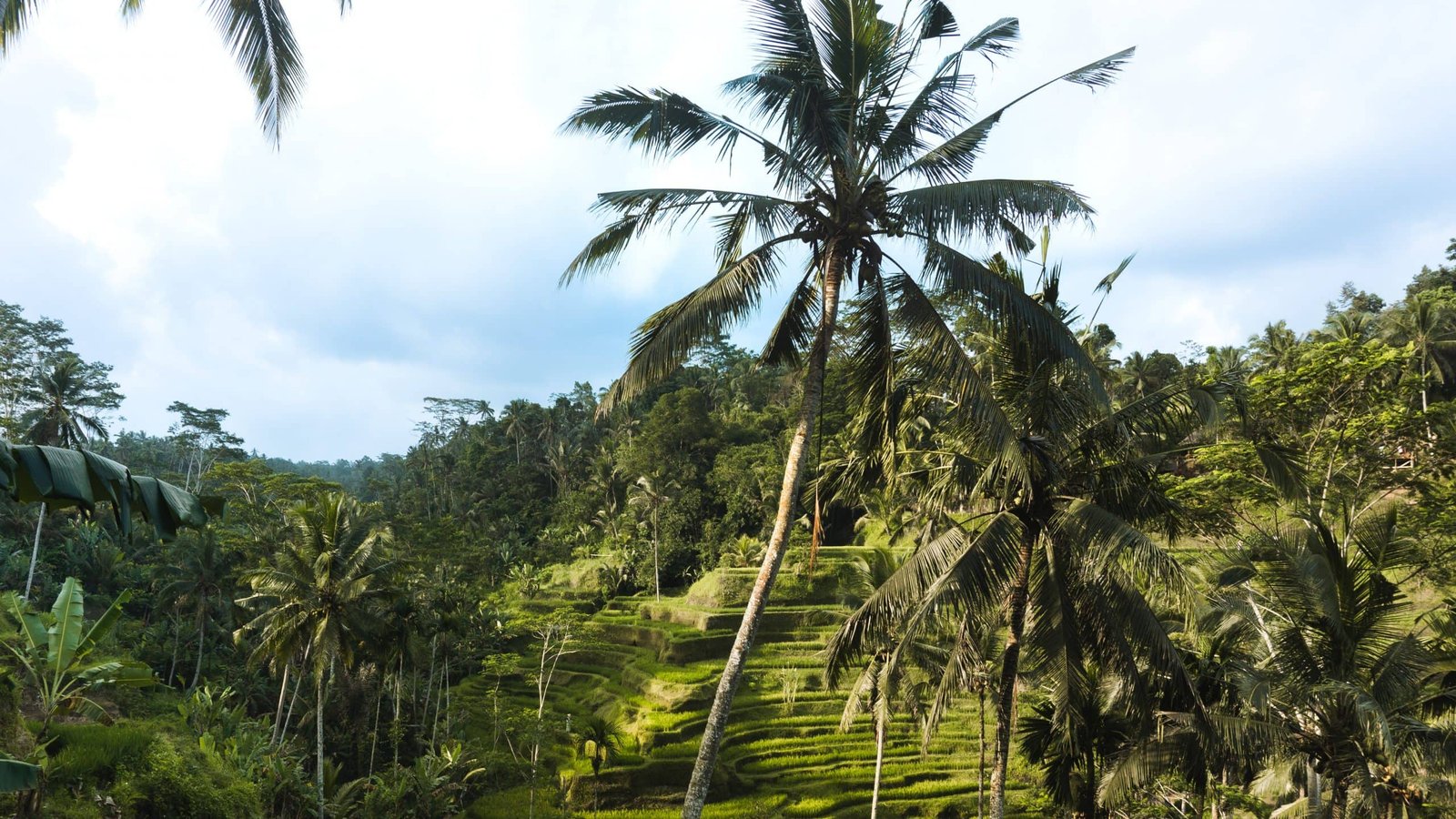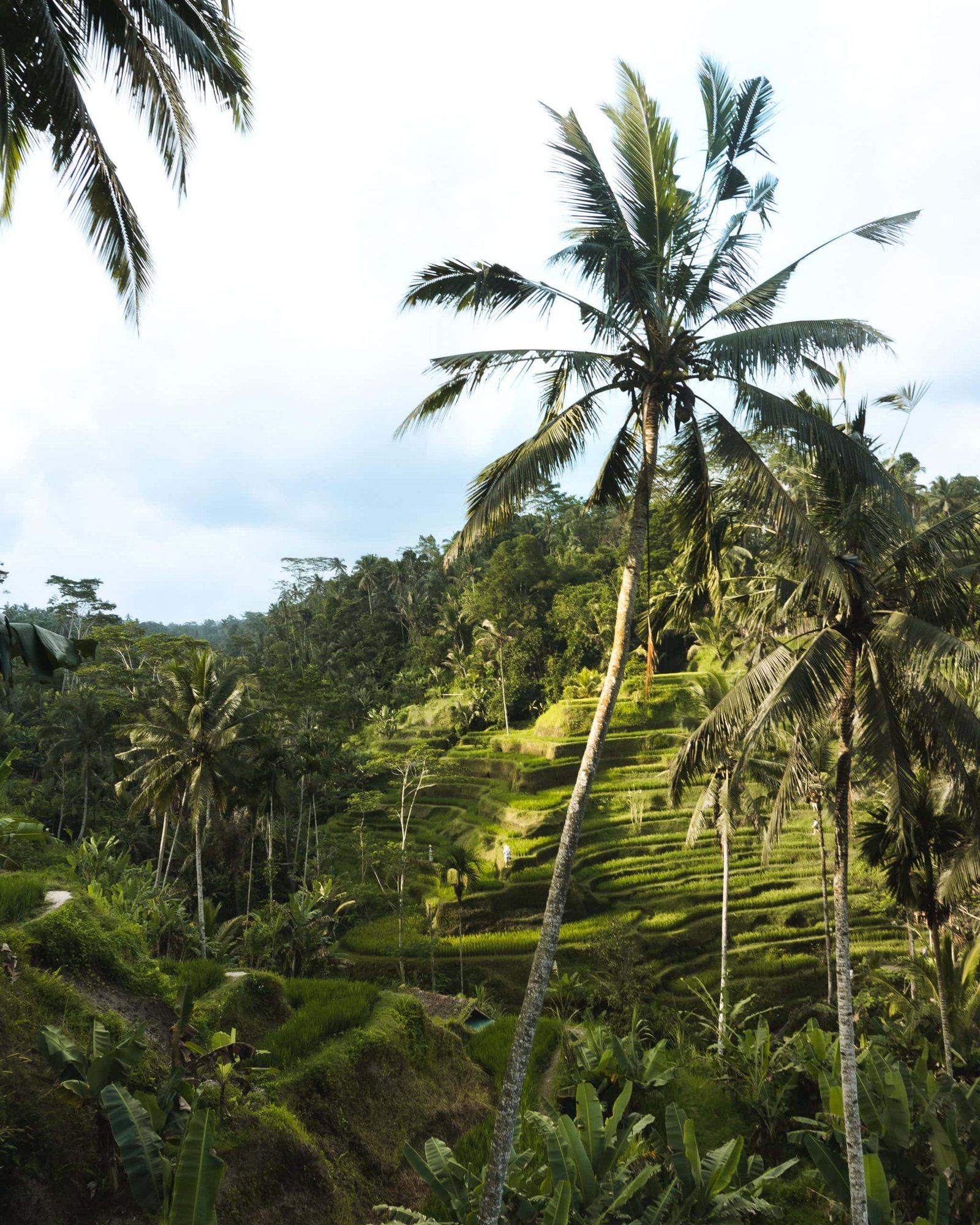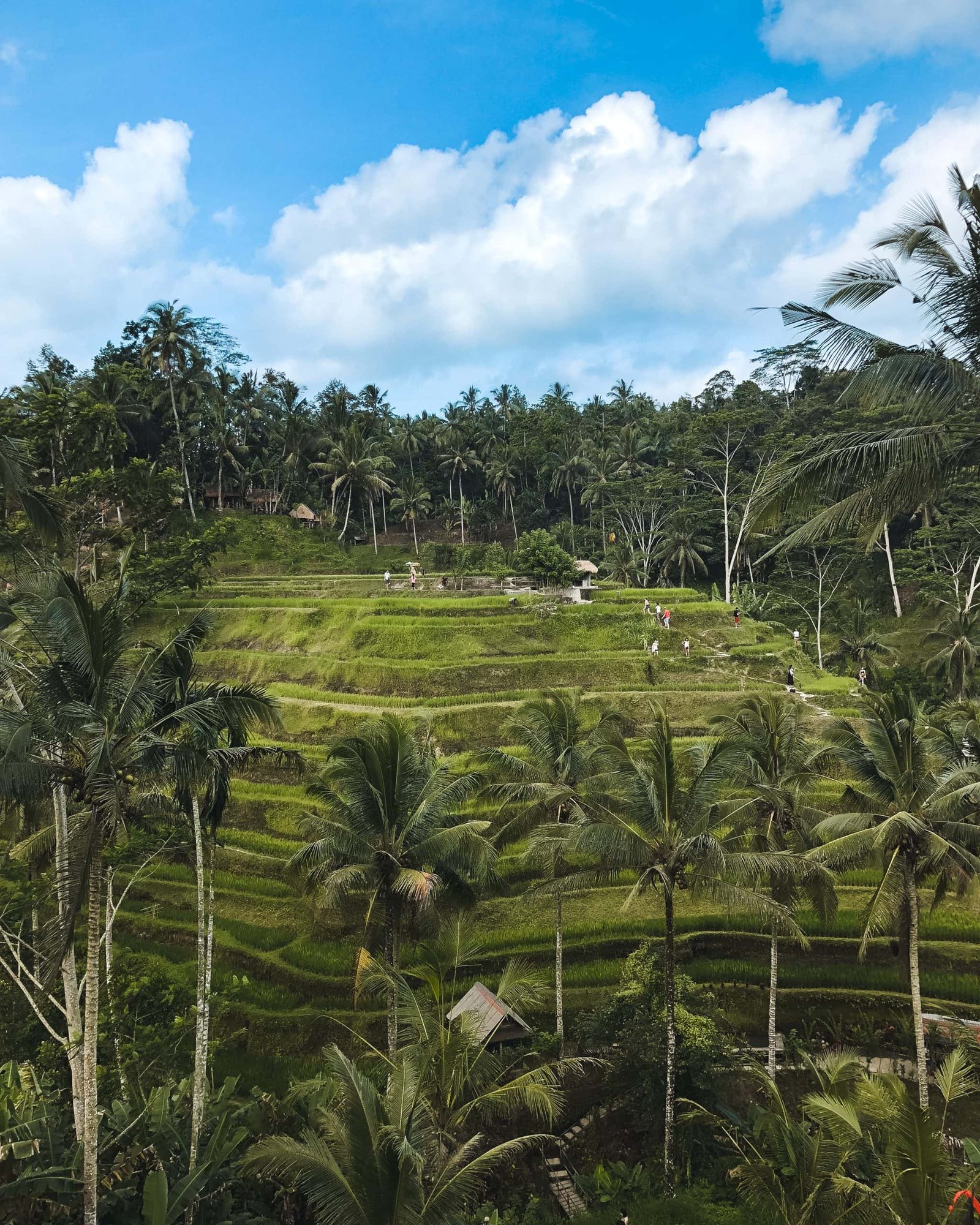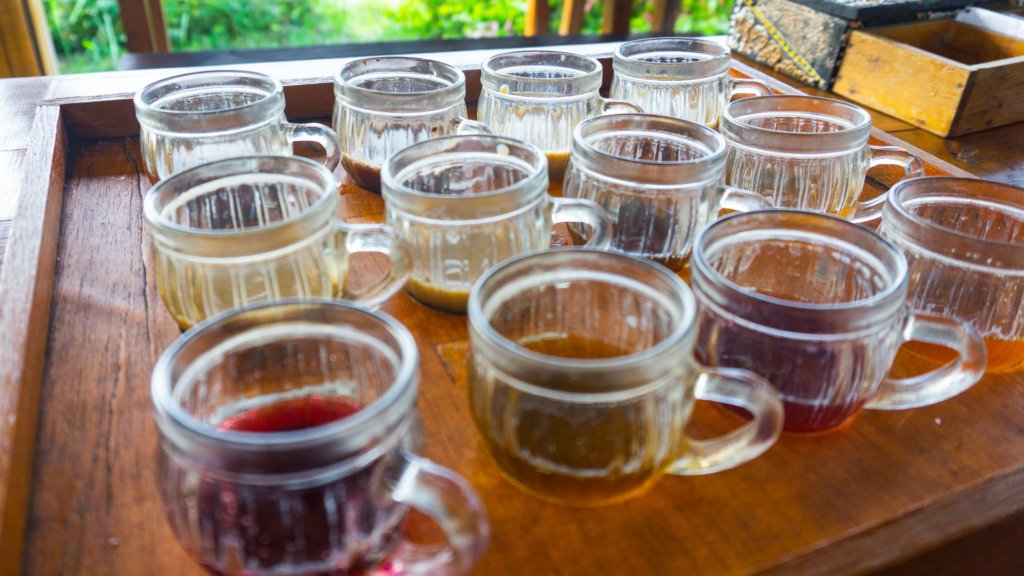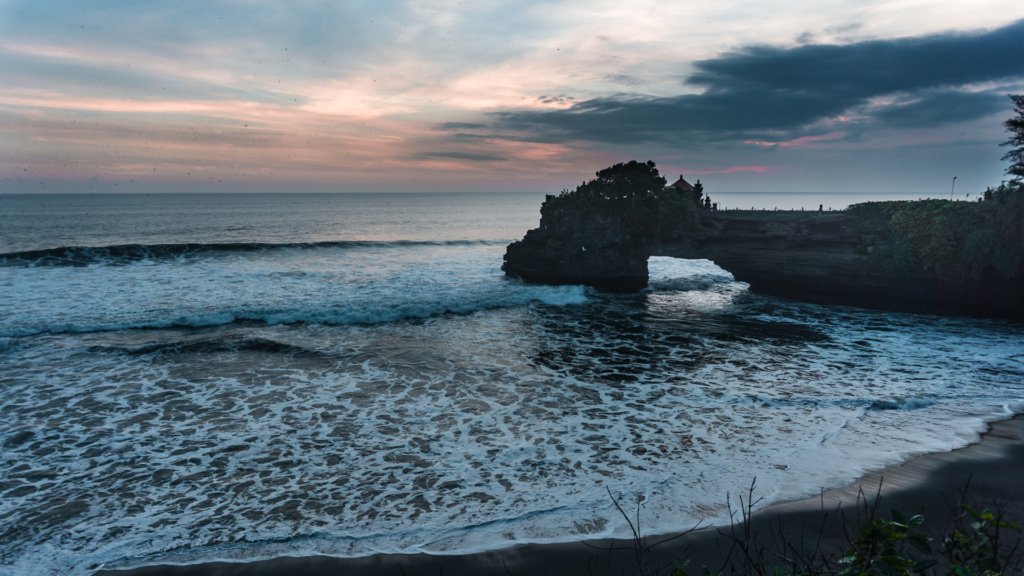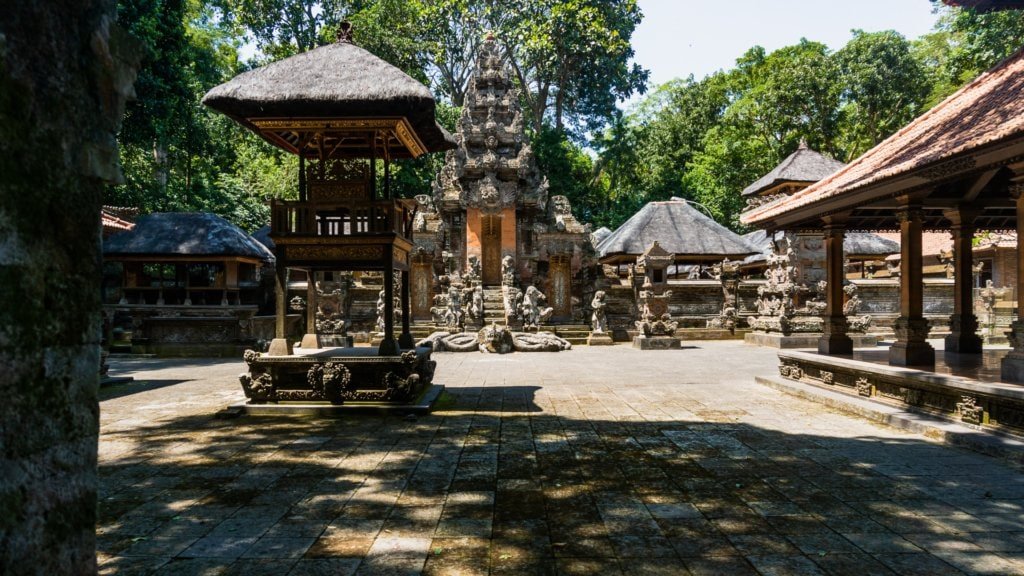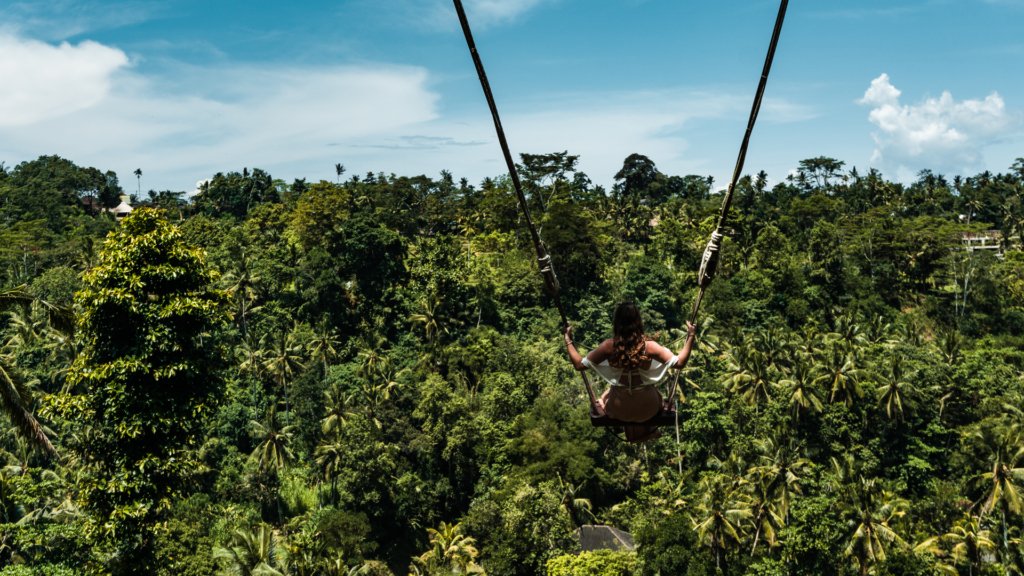General facts:
- Entrance fee: free of charge
- The journey from Ubud takes about 20 minutes by scooter
- To the left of the rice terraces you will find numerous car parks
- It is possible to book tours, which are usually combined with other attractions
What you can expect on-site
The rice terraces of Tegallalang represent a particularly beautiful natural environment with a magnificent view. The terraced rice fields are visually very attractive. The area is located directly on the road and is therefore easily accessible. The view from the road itself is marvellous. So you don’t have to look far to find the rice terraces of Tegallalang. Don’t fancy a short hike? Then just sit down in one of the cafés and enjoy the view of the rice fields. Due to Tegallalang’s slightly higher altitude, the climate is less warm and humid. If you fancy a bit of exercise, you can follow the hiking trail through the rice terraces. From the cafés, a staircase leads down into the rice fields. Just follow the path. This will take you all the way down into the rice fields and then back up the rice terraces. The trekking tour through the rice fields takes about 30 minutes. During the tour, you may be asked to make a small donation a few times. The donations are voluntary, but the locals see them more as a kind of toll. According to them, they are intended for the maintenance of the paths and bridges in the rice fields.
Working on the rice terraces
The fields are supported by walls and dams. Irrigation is provided by a sophisticated irrigation system that draws water from springs and streams. Fields are planted by placing small rice plants individually by hand in the flooded rice basins. The plants are planted in rows. Around three months later, the rice can be harvested by hand. It is then dried in the sun. Once the rice is dry enough, the ears are threshed so that the rice grains come loose. Due to the fertile volcanic soil, Bali offers ideal conditions for the growth of rice – around three rice harvests per year are possible. Accordingly, rice is one of the staple foods in Bali and forms the basis of livelihood for many families. In honour of the Balinese goddess of fertility, Dewi Sri, shrines are erected at the borders of the rice fields containing small offerings. This is to ensure a safe and good harvest for the Balinese. Dewi Sri is therefore also known as the rice goddess.

